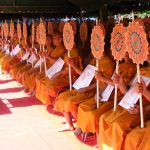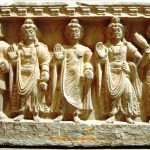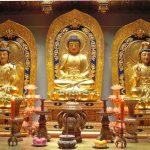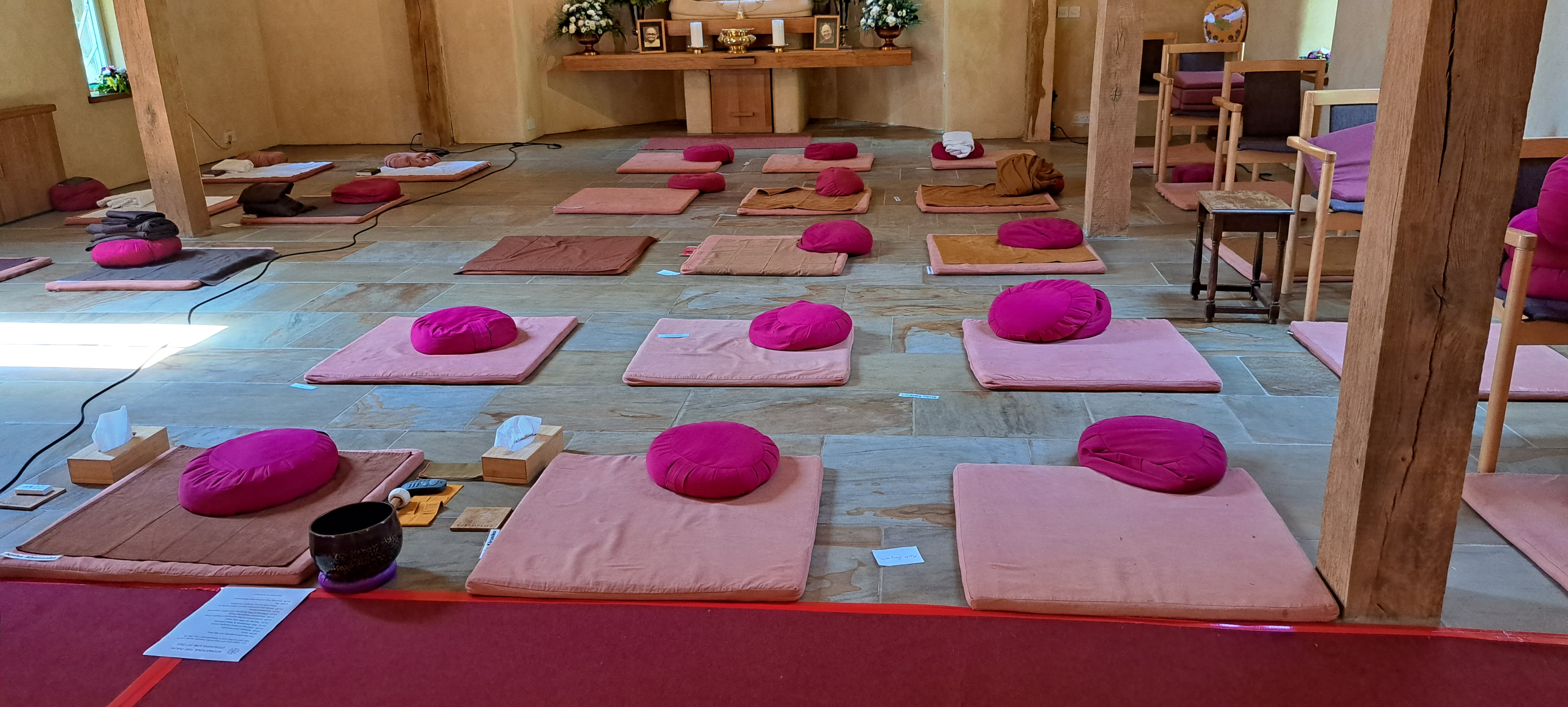Traditions
Please click here for Buddhist groups in the Canterbury
Buddhism
Wikipedia describes Buddhism as a nontheistic religion or philosophy (Sanskrit: dharma; Pali: dhamma), that encompasses a variety of traditions, beliefs and practices largely based on teachings attributed to Siddhartha Gautama, commonly known as the Buddha (“the awakened one”). According to Buddhist tradition, the Buddha lived and taught in the eastern part of the Indian subcontinent sometime between the 6th and 4th centuries (BCE). He is recognized by Buddhists an awakened or enlightened teacher who shared his insights to help sentient beings end their suffering through the elimination of ignorance and craving. Buddhists believe that this is accomplished through direct understanding and the perception of dependent origination and the Four Noble Truths. Depending on the branch of Buddhism, the final goal could be Arahantship, Buddhahood, or rainbow body.
The main traditions
and schools of Buddhism are listed here courtesy of Wikipedia and from which you will be able to find links to other resources and organisations. You may also like to browse our Resources pages.
Theravada
 Theravāda (Pali, literally “school of the elder monks”) is a branch of Buddhism that uses the teaching of the Pāli Canon, a collection of the oldest recorded Buddhist texts, as its doctrinal core, but also includes a rich diversity of traditions and practices that have developed over its long history of interactions with various cultures and communities. It is the dominant form of religion in Cambodia, Laos, Sri Lanka, Thailand, and Burma, and is practiced by minority groups in Vietnam, Bangladesh, and China. In addition, the diaspora of all of these groups as well as converts around the world practice Theravāda Buddhism.
Theravāda (Pali, literally “school of the elder monks”) is a branch of Buddhism that uses the teaching of the Pāli Canon, a collection of the oldest recorded Buddhist texts, as its doctrinal core, but also includes a rich diversity of traditions and practices that have developed over its long history of interactions with various cultures and communities. It is the dominant form of religion in Cambodia, Laos, Sri Lanka, Thailand, and Burma, and is practiced by minority groups in Vietnam, Bangladesh, and China. In addition, the diaspora of all of these groups as well as converts around the world practice Theravāda Buddhism.
Mahayana
 According to the teachings of Mahāyāna traditions, “Mahāyāna” also refers to the path of the Bodhisattva seeking complete enlightenment for the benefit of all sentient beings, also called “Bodhisattvayāna”, or the “Bodhisattva Vehicle.” A bodhisattva who has accomplished this goal is called a samyaksaṃbuddha, or “fully enlightened Buddha.” A samyaksaṃbuddha can establish the Dharma and lead disciples to enlightenment. Mahayana Buddhists teach that enlightenment can be attained in a single lifetime, and this can be accomplished even by a layperson.
According to the teachings of Mahāyāna traditions, “Mahāyāna” also refers to the path of the Bodhisattva seeking complete enlightenment for the benefit of all sentient beings, also called “Bodhisattvayāna”, or the “Bodhisattva Vehicle.” A bodhisattva who has accomplished this goal is called a samyaksaṃbuddha, or “fully enlightened Buddha.” A samyaksaṃbuddha can establish the Dharma and lead disciples to enlightenment. Mahayana Buddhists teach that enlightenment can be attained in a single lifetime, and this can be accomplished even by a layperson.
Zen
 Zen emphasizes rigorous meditation-practice, insight into Buddha-nature, and the personal expression of this insight in daily life, especially for the benefit of others. As such, it deemphasizes mere knowledge of sutras and doctrine and favors direct understanding through zazen and interaction with an accomplished teacher.
Zen emphasizes rigorous meditation-practice, insight into Buddha-nature, and the personal expression of this insight in daily life, especially for the benefit of others. As such, it deemphasizes mere knowledge of sutras and doctrine and favors direct understanding through zazen and interaction with an accomplished teacher.
Pure Land
 Pure Land Buddhism oriented practices and concepts are found within basic Mahāyāna Buddhist cosmology, and form an important component of the Mahāyāna Buddhist traditions of China, Japan, Korea, Vietnam, and Tibet. The term “Pure Land Buddhism” is used to describe both the Pure Land soteriology of Mahāyāna Buddhism, which may be better understood as “Pure Land traditions” or “Pure Land teachings,” and the separate Pure Land sects that developed in Japan. In Japanese Buddhism, Pure Land teachings developed into independent institutional sects, as can be seen in the Jōdo-shū and Jōdo Shinshū schools.
Pure Land Buddhism oriented practices and concepts are found within basic Mahāyāna Buddhist cosmology, and form an important component of the Mahāyāna Buddhist traditions of China, Japan, Korea, Vietnam, and Tibet. The term “Pure Land Buddhism” is used to describe both the Pure Land soteriology of Mahāyāna Buddhism, which may be better understood as “Pure Land traditions” or “Pure Land teachings,” and the separate Pure Land sects that developed in Japan. In Japanese Buddhism, Pure Land teachings developed into independent institutional sects, as can be seen in the Jōdo-shū and Jōdo Shinshū schools.
Tibetan
 Tibetan Buddhism is the body of Buddhist religious doctrine and institutions characteristic of Tibet, Mongolia, Tuva, Bhutan,Kalmykia and certain regions of the Himalayas, including northern Nepal, and India (particularly in Arunachal Pradesh, Ladakh,Dharamsala, Lahaul and Spiti district in Himachal Pradesh and Sikkim). It is the state religion of Bhutan. It is also practiced in Mongolia and parts of Russia (Kalmykia, Buryatia, and Tuva) and Northeast China. Religious texts and commentaries are contained in the Tibetan Buddhist canon such that Tibetan is a spiritual language of these areas.
Tibetan Buddhism is the body of Buddhist religious doctrine and institutions characteristic of Tibet, Mongolia, Tuva, Bhutan,Kalmykia and certain regions of the Himalayas, including northern Nepal, and India (particularly in Arunachal Pradesh, Ladakh,Dharamsala, Lahaul and Spiti district in Himachal Pradesh and Sikkim). It is the state religion of Bhutan. It is also practiced in Mongolia and parts of Russia (Kalmykia, Buryatia, and Tuva) and Northeast China. Religious texts and commentaries are contained in the Tibetan Buddhist canon such that Tibetan is a spiritual language of these areas.
